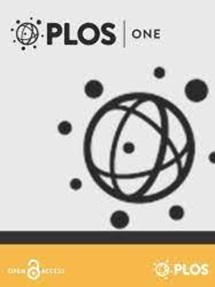Visfatin (NAMPT) expression in human placenta cells in normal and pathological conditions and its hormonal regulation in trophoblast JEG-3 cells
IF 2.9
3区 综合性期刊
Q1 MULTIDISCIPLINARY SCIENCES
引用次数: 0
Abstract
Visfatin is an adipokine involved in energy metabolism, insulin resistance, inflammation, and female reproduction. Due to limited data about its action in the human placenta, the aims of our studies included the analysis of visfatin expression and immunolocalization in trophoblast cell lines JEG-3 and BeWo as well as in human placentas from normal and pathological pregnancies. Moreover, we also checked the hormonal regulation of visfatin levels and the molecular mechanism of observed changes in JEG-3 cells. Cell culture and placental fragments collection along with statistical analysis were performed using standard laboratory procedures also described in our previous papers. We demonstrated an increased gene and protein expression of visfatin in JEG-3, BeWo cells, while variable expression in maternal and fetal parts of normal/ pathological pregnancy placentas. In addition, the immunolocalization of visfatin was observed in the cytoplasm of both cell lines, the capillary epithelium of the maternal part and syncytiotrophoblasts of the placental fetal part; in all tested pathologies, the signal was also detected in decidual cells. Furthermore, we demonstrated that hormones: progesterone, estradiol, human chorionic gonadotropin, and insulin increased the visfatin levels in JEG-3 cells with the involvement of specific signaling pathways. Taken together, differences in the expression and localization of visfatin between normal and pathological placentas suggested that visfatin may be a potential marker for the diagnosis of pregnancy disorders. In addition, we found that placental levels of visfatin can be regulated by hormones known to modulate the function of placental cells.正常和病理情况下人胎盘细胞中Visfatin(NAMPT)的表达及其在滋养层JEG-3细胞中的激素调控
Visfatin是一种脂肪因子,参与能量代谢、胰岛素抵抗、炎症和女性生殖。由于有关其在人类胎盘中作用的数据有限,我们的研究目的包括分析滋养层细胞系 JEG-3 和 BeWo 以及正常和病理妊娠的人类胎盘中粘蛋白的表达和免疫定位。此外,我们还检测了激素对粘蛋白水平的调控以及在 JEG-3 细胞中观察到的变化的分子机制。细胞培养和胎盘碎片收集以及统计分析都是按照我们之前论文中描述的标准实验室程序进行的。我们证明了粘蛋白在 JEG-3 和 BeWo 细胞中的基因和蛋白表达量增加,而在正常/病理妊娠胎盘的母体和胎儿部分的表达量则不尽相同。此外,在两种细胞系的细胞质、母体部分的毛细血管上皮细胞和胎盘胎儿部分的合胞滋养细胞中都观察到了粘蛋白的免疫定位。此外,我们还证明了激素:黄体酮、雌二醇、人绒毛膜促性腺激素和胰岛素会在特定信号通路的参与下增加 JEG-3 细胞中的粘蛋白水平。综上所述,正常胎盘和病理胎盘中粘蛋白表达和定位的差异表明,粘蛋白可能是诊断妊娠疾病的潜在标志物。此外,我们还发现胎盘粘蛋白的水平可受已知可调节胎盘细胞功能的激素调节。
本文章由计算机程序翻译,如有差异,请以英文原文为准。
求助全文
约1分钟内获得全文
求助全文
来源期刊

PLoS ONE
生物-生物学
CiteScore
6.20
自引率
5.40%
发文量
14242
审稿时长
3.7 months
期刊介绍:
PLOS ONE is an international, peer-reviewed, open-access, online publication. PLOS ONE welcomes reports on primary research from any scientific discipline. It provides:
* Open-access—freely accessible online, authors retain copyright
* Fast publication times
* Peer review by expert, practicing researchers
* Post-publication tools to indicate quality and impact
* Community-based dialogue on articles
* Worldwide media coverage
文献相关原料
| 公司名称 | 产品信息 | 采购帮参考价格 |
|---|
 求助内容:
求助内容: 应助结果提醒方式:
应助结果提醒方式:


